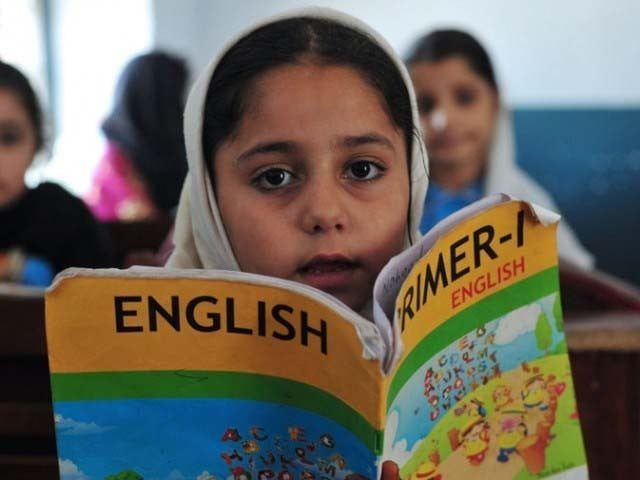Maina Gathinjaga WaGîokõ, a fellow educationist from Kenya, once said,
“I am not worried about the 850,000 who are out of school. I am more worried about the 12 million who are in school.”
The current level of enrollment in kindergarten at 84% reflects developed country-level participation at the pre-primary level, whereas five million children from the age band of five to nine years are out of school. A majority of out-of-school children (78%) falls within the age group of 10-16 years, many of whom are now out of school because either the schools were not accessible or because the institutions failed to capture their interest, offering very little value for personal development.
So what are we doing with the 10 million who make an effort to show up to school every day? We place them in a murky mesh of regurgitation where the teachers don’t know how to speak in the ‘language’ of instruction. In this pandemonium, neither do the children develop a grasp on the language nor are they able to engage with ideas and concepts. This scuffle with letters, sounds, pronunciation and possible meanings does not allow for engagement. Discourse succumbs to the struggle of just being able to ‘read’ the familiar text and develop enough grasp to plagiarise it at some point later on in life.
The report has very aptly pointed out that English medium is a misnomer. It refers to the language of the textbooks, and not the language of instruction or learning. According to a survey by the British Council, 94% of English-medium private school teachers in Punjab do not speak English. And only four to 12% of third graders in Pakistan are fluent readers and understand 80% of what they are reading in English. Reading entails that child should be able to read and engage with an unseen text. If around 90% of children at the pre-primary level are unable to do so, they are not learning.
According to the Wilson Center report, Atif Khan, the minister for education in Khyber Pakhtunkhwa (K-P) from 2013 to 2018, explained,
“Government schools had a problem that English was taught after fifth grade, and those kids had problems throughout life. If one kid [who goes to a private school] has the opportunity to study English from kindergarten and another [who goes to government school] from sixth grade, there will be a difference between them. So because of that, we decided to make it all in English.”
Whereas, Shafqat Mahmood, the federal education minister, who is pursuing a “uniform” curriculum, has stated that,
“The elite private schools will become the medium that the National Curriculum Council decides. There are 400,000 (students) who go to these elite schools. There are 22 million other people who are studying in this country, and they are studying Urdu and they are studying all sorts of things. If it is a revolution to get the elite to study your national language then so be it, let it be the revolution. But I’m not going to decide that, it’s going to be decided by the National Curriculum Council. My feeling is that the first five years should be Urdu. And then from 5th grade to 10th grade – or whatever (years), the experts decide – you teach English as a language. But Urdu has to be your unified language.”
However, this statement seems to have obliquely missed the real issue at hand and has grossly overestimated the use of Urdu in Pakistan. According to the Pakistan Bureau of Statistics, 1% children in Balochistan, 1% in K-P, 5% in Punjab and 2% in Sindh speak Urdu at home. Whereas English is spoken in less than 1% of the homes. Most children can communicate and comfortably cognitively engage in one of the 61 mother tongues spoken in the country. Pakistan is one of the very few countries in the world where children are not taught their mother tongue through early years of development even though research extensively talks about its importance. In Pakistan, only one province offers some instruction in a regional language (Sindhi), versus India, where all except for one state offers instruction in the regional language.
This seemingly small ‘glitch’ in policy sets millions of children up for failure and starts a socio-economic strife which deems their intellect worthless if it is manifested in the language of comfort. The lack of content and resources in those languages deters them from extending their learning across other disciplines, putting them on a path to nowhere.
Contrary to popular belief, education is no longer a poorly-funded state department. The budget for education has been growing a rate of 17.5% since 2010, according to the report by Wilson Center. This funding exceeds the external funding, where too Pakistan is one the largest externally-funded reform in the world. To top it off, parents of 40% of the children enrolled in schools pay a double tax, once through regressive sales taxes and then through private schools. The education departments of most provinces are the largest after the military. The salaries for teachers are way above that of the private sector. And then with a high rate of absenteeism (40% in 2005), permanent substitutions through ‘visa system’, conversion of contract-based teachers into government employees and heavy politicisation of the entire department, learning takes a backseat.
Some efforts are now being made in this direction by USAID through its Pakistan Reading Project and Sindh Reading Program which is finally focusing its attention on developing the capacity of teachers to teach reading Urdu and Sindhi through phonetics. Other materials are also under development to teach reading in Pashto, Balochi and Brahvi.
The Citizen’s Foundation (TCF) is spearheading the reform in the right direction with its initial commitment towards using Urdu as the medium of instruction across its 1,500 schools. Now it is gradually shifting towards using the mother tongue as the language of instruction and learning for early years. It has researched extensively to develop a three-step formula to help children develop cognitively, socially and academically. The children start school in their mother tongue and continue using it for six to eight years. A second, linguistically proximate language is added if it doesn’t interfere with the development of the first language, orally to begin with. After the first three to four years, a foreign language such as English is introduced, just as a subject for five years and not as a medium of learning. Once the children have a strong enough grasp over the language, further disciplines can be introduced at a higher level. This would allow the child to sustain their interest in learning across disciplines and develop and extend their learning with ease, all the while not falling behind significantly. Multi-lingualism at higher education levels can lead to an improvement in the quality of scholarship, which is stunted by keeping English as a medium of expression of ideas.
If I have to add my two cents as a solution to this education emergency, it would pivot around the phrase ‘less is more’. So rather than teaching a wide array of subjects at an early age, the policymakers should aim towards developing trans-disciplinary units of inquiry in regional languages. This should be around themes and information that is basic and of utmost importance for a child to know to develop into independent learners and responsible citizens of the country. English should be taught as a language from ages seven or eight with the necessary scaffolds needed for non-native speakers.
Moreover, more effective timetabling is key to most education reforms. A balance between educator-led activities and independent learning can help improve student to teacher ratios. A shorter but more meaningful contact time with the educator can allow them to take multiple groups of children in a day and work with them on a more personal level.
We cannot assume that this problem will have a linear solution. However, acknowledging the issue as an important one and prioritising it over all other postulations can help those in power to look at the education’s conundrum in a new light and take the necessary steps that such an important finding warrants.



COMMENTS
Comments are moderated and generally will be posted if they are on-topic and not abusive.
For more information, please see our Comments FAQ